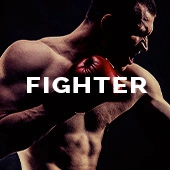I’d expected Saul “Canelo” Alvarez-Jaime Munguia to be a very good fight, but what stood out above all else was the extent to which it showed how much Canelo has changed.
Munguia showed a vast amount of improvement – those first three rounds, particularly, were great for him. But you could also tell that Canelo was downloading the data, and looking for openings. That knockdown he scored in the fourth round was brilliant – he threw a brilliant hook that cuffed Munguia’s glove, and pulled Munguia into that short, hard uppercut in the middle of a combination. It was a very, very impressive move, and from then on he was in control.
Throughout fight week he “big brothered” Munguia. He was super confident, and during those first three rounds stayed cool, calm and collected, and then took over after landing that punch to produce a masterclass both in setting traps and in his ring generalship.
He’s a different fighter to the one who established himself as the world’s leading fighter. There’s been a lot of talk about him not being as good as he once was, but I’m not sure that I agree. At 33, he’s not the same athletically, but he’s increasingly fighting like an ageing fighter should. He slows down the pace of his fights, sets traps, and allows his younger opponents to run into shots.
Instead of fighting four times a year he’s fighting twice, and throwing fewer punches, and while he’s not the finisher he once was, he’s still explosive, and he’s a better tactician and technician than ever. A knockout puncher has to take risks – he’s not taking them. He’s instead prioritising his increasingly high boxing IQ. The well-executed combinations he lands also always seem part of a plan. When he lost to Floyd Mayweather, he added new angles to his armoury. When he lost to Dmitrii Bivol, he did the same again.
That ability to adapt is keeping him at the high level he’s at. His evolution actually reminds me of Evander Holyfield’s. Holyfield occasionally threw a lot of punches, fought in periods during rounds, and was vicious when he did – even as an undersized heavyweight.
The build-up to his fight with Jermell Charlo, and his performance that night, showed that he’s recovered from his hand injury, and that he retains all of the intensity that got him to the top in the first place, even if Charlo was unwilling to trade with him. It’s really difficult to hurt an opponent who fights like Charlo did that night. But the intensity that seemed to wane a little after Canelo lost to Bivol and therefore during his victories over Gennady Golovkin and John Ryder looked back, and could be seen again against Munguia.
If Canelo had started to find himself outside of the top five of pound-for-pound lists, he returned to them with his performance against Munguia. He was not only impressive, he gave cause for excitement, because there are further big fight weeks to look forward to in his career.
Edgar Berlanga’s been loudly campaigning to be Canelo’s next opponent. I’d started to give up hope of Canelo ever fighting David Benavidez, but the influence of Turki Alalshikh makes me believe that it’s once again a possibility
Every bit as exciting as the prospect of seeing Canelo in further big fights was watching Naoya Inoue beat Luis Nery. Inoue is sublimely talented, and as gifted physically as he’s gifted psychologically and in his fundamentals – which makes him incredibly exciting.
He’s also exciting because of his willingness to take risks. Nery looked very serious and focused when he made his way to the ring, and wasn’t only the bigger of the two, he looked strong, and dangerous, and succeeded in landing his left hand early on.
He knocked Inoue down early on, and Inoue was badly hurt – partly because he’d rushed – but his ability to recover and revert to his game plan and work from behind his jab showed how brilliant he remains.
The victories over Stephen Fulton Jr and in the rematch with Nonito Donaire were regardless more impressive than that over Nery – and if he’s going to stay at 122lbs I’d like to see him fight Murodjon Akhmadaliev next, because of Akhmadaliev’s aggressive style and the fact he’s a small target. In Akhmadaliev’s only defeat, by Marlon Tapales – who Inoue’s since beaten – he was fighting with a bad hand injury.
But the fight I most want to see Inoue in is with Brandon Figueroa at 126lbs. Figueroa’s a very good, very tough fighter who didn’t look great in victory over Jessie Magdaleno on the undercard of Canelo-Munguia, but who remains dogged and big at the weight, and who retains a killer left hand. Inoue possesses what he needs to succeed at 126lbs – even if there was a moment when Nery, who previously campaigned beneath 122lbs, made him look human at 122lbs. It’s 130lbs that might be beyond him.
If Inoue and Terence Crawford were at the same weight, however, I’d back Crawford to beat him. Crawford has a style unto himself – as fundamentally sound as Inoue is, Crawford has a different gear and an ability to find and take holes and openings that no one else can see. For all that Inoue’s as calculated as he is, Crawford’s just that guy.

